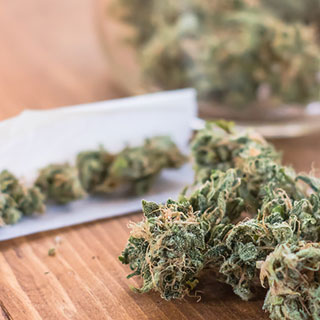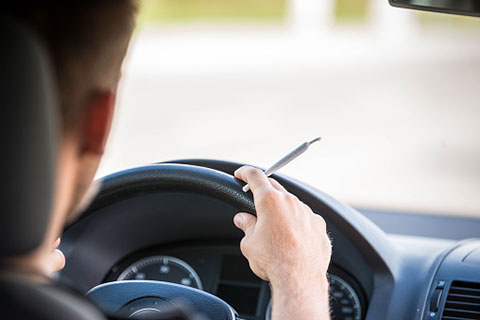From high in the Rockies to the Pacific Northwest’s stony shores, more Americans seem to be firing up their bongs before firing up their engines.
Drugged driving may be on the rise across the country, according to the latest statistics on the subject, which were part of a recently released report on the matter compiled by the federal government in 2015.
Of a representative nationwide sample, 22% of all drivers stopped for the study tested positive for at least one drug capable of “affect[ing] safety”—be it weekend or weekday, daytime, or night—according to the report.
While the findings showed an escalation of weekend night drivers with any drug in their system—from 16.3% in 2007 to 20% in 2014—it heralded an even steeper increase of stoners on the road.
Over that same period, the percentage of people testing positive for pot shot up nearly 50%, from 8.6% of drivers in 2007 to 12.6% in 2014.
In the nearly 3 years since, the number of states where legal weed can be bought has jumped from 2 to 8, plus the District of Columbia. And proponents of the measures have acquired some of their own numbers as well—including the $1 billion in marijuana revenue Colorado earned in 2015 alone.
Profitable and popular, the propositions seem poised to continue sweeping across the country—an outcome the government anticipated with its report, which focuses on the impact marijuana may have on driving—and how the subject should be dealt with.
The document is comprised of both data and opinions offered by a panelist of experts in a range of fields, from law enforcement to science, who provided their best advice for the National Highway Traffic Safety Administration (NHTSA) and the Governors Highway Safety Association (GHSA).
And as states continue rolling out recreational programs while others mull the idea, those suggestions will likely serve as a guidepost for regulators nationwide.
But the document also left open some important questions that, even now, have yet to be answered.
What’s Your Number?
Marijuana is a notoriously tricky substance to pin down, often showing up on drug tests in ways that only seem to make sense to those under the influence of the herb.
The issue revolves around twin problems: the wide variation of tolerance levels to tetrahydrocannabinol (THC), and the fact that it dissolves in fat, making it stick around in the body much longer than other drugs.
More active users, then, like the 1.2 million medicinal card holders nationwide, can both typically absorb more of the chemical before showing any signs of impairment, outwardly or otherwise, and test positive for it long after their high is gone.
That so many people can be affected so differently by the substance makes it difficult to set legal markers for inebriation, which must be administered across the board. Most states that have adopted recreational marijuana have settled on 5 nanograms of THC or more per millimeter of blood, despite a study showing that 13.1 nanograms is the equivalent of a 0.08 blood alcohol level.
Active marijuana users, like the 1.2 million medicinal card holders nationwide, can absorb more of the chemical THC before showing any signs of impairment, and test positive long after their high is gone.
Still, just how much of the stuff can be legally tolerated remains a contentious debate. And the complex subject is compounded by the fact that the only established methods of accruing accurate THC levels are through urine or blood—the collection of which requires a cumbersome trip to the police station and often the procurement of a warrant. It can be months before results are returned, one expert said.
Since the 2015 report was created, a number of companies have been clamoring to produce a weed Breathalyzer to simplify the process. Some prototypes, like the Dragger 5000, have gained traction, with nationwide tests underway.
Ultimately, the government’s group of experts turned to the National Safety Council’s Alcohol, Drugs and Impairment Division for direction, at least when it comes to toxicity reports, endorsing a complex regulation matrix proposed by the agency to deal with the issue.
Appropriate THC levels, however, were never proposed. The divided group seemed to allow state representatives to make their own cases, which could eventually lead to patchwork legislation on the matter.
Get Smart
One thing the panel agreed on is the need for more education on stoned driving—both for the public and law enforcement.
The panel all called for the creation of a field sobriety test for pot—although that idea comes with its own set of issues, not least of which being that some experts doubt its potential efficiency.
Aside from learning how to detect the effects of marijuana in drivers, officers would be well served by taking “good, detailed notes based on their observations,” along with filing a well-written police report, according to the federal report.
The latter move would be doubly beneficial, as it could help weed-related litigation travel more quickly through municipal court systems, where it often lingers longer than other drug cases, the experts said.
Some went as far as recommending judges spend time in “wet labs”—places they can observe individuals under the influence of the drug—in order to help inform their opinions.
And all agreed that public campaigns were a pivotal part of the process—both to let users know how potent the product can be (especially edibles, which tend to hit harder, and on a delay), and how severe the consequences of driving high are.
Where There’s Smoke…?

Still, the panel was loathe to make many more suggestions, with so much on the topic still up for debate—or outright unknown.
The group resoundingly called for more data to be gathered on the issues surrounding stoned driving. And the current batch of available numbers certainly leave something to be desired: clarity.
Studies on the subject have often proven contradictory to one another, and complicated in their own right, with results landing all over the spectrum.
The NHTSA itself once came to a conclusion that perfectly captures such confusion.
In a 2015 study, it found pot smokers had about a 25% higher chance of crashing than their sober counterparts. But that number was essentially refuted later on, as the agency reported that those involved in the accidents were statistically more likely to take risks anyway, resulting in a mathematical wash.
More numbers are clearly needed to fill in the many blanks, but with Attorney General Jeff Sessions recently placing recreational marijuana in his legal crosshairs, it may be decades before the haze lifts.
